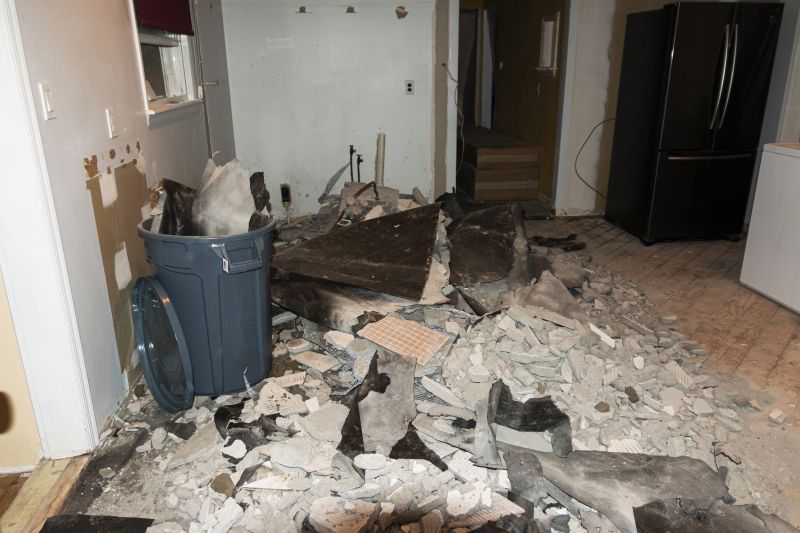Favorite Fire Restoration Tools For Safe and Effective Cleanup
Identify the most popular and effective products to help you restore fire-damaged properties with confidence.
 Fire restoration products are essential tools and materials used to repair and recover properties affected by fire damage. These products address a variety of challenges such as smoke and soot residue, structural damage, odor removal, and water damage resulting from firefighting efforts. Proper selection and application of these products can significantly aid in the restoration process, helping to restore safety, cleanliness, and comfort to affected spaces.
Fire restoration products are essential tools and materials used to repair and recover properties affected by fire damage. These products address a variety of challenges such as smoke and soot residue, structural damage, odor removal, and water damage resulting from firefighting efforts. Proper selection and application of these products can significantly aid in the restoration process, helping to restore safety, cleanliness, and comfort to affected spaces.
Top Overall Option
Multi-Purpose Fire Damage Restoration Kit
A comprehensive kit that includes a variety of cleaning agents, odor neutralizers, and moisture control tools designed to address multiple aspects of fire damage restoration. Ideal for professionals and serious DIY restorers seeking an all-in-one solution to manage soot, smoke, water, and odor issues efficiently.
Types of Products For Fire Restorations
Soot and Smoke Cleaners
Specialized cleaning agents formulated to remove soot and smoke residues from surfaces, fabrics, and HVAC systems.
Odor Neutralizers
Products designed to eliminate or mask smoke odors, including ozone generators and enzyme-based deodorizers.
Water Extraction Equipment
High-powered wet/dry vacuums and extractors used to remove water from flooded areas caused by firefighting efforts.
Dehumidifiers and Drying Fans
Devices that help reduce moisture levels in affected areas to prevent mold growth and structural damage.
Structural Repair Materials
Plywood, drywall, and reinforcement supplies used to replace or repair fire-damaged building components.
Air Purifiers and HEPA Filters
Equipment that improves indoor air quality by capturing airborne particles and contaminants.
Personal Protective Equipment
Respirators, gloves, and protective suits to ensure safety during restoration work.
Fire-Resistant Sealants
Sealants and coatings that help contain damage and prevent the spread of smoke and fire.
Thermal Imaging Cameras
Tools used to detect hidden hotspots or moisture pockets within walls and ceilings.
Cleaning Cloths and Brushes
Durable tools for manual cleaning and soot removal on various surfaces.
Popular Choices
Widely used products to neutralize lingering smoke smells in residential and commercial spaces.
Effective for removing standing water and debris after fire suppression efforts.
Commonly employed to improve indoor air quality during and after restoration activities.
Versatile cleaning solutions suitable for various surfaces affected by soot and smoke.
Popular for controlling humidity and preventing mold growth in damp, fire-affected areas.
Frequently used to eliminate strong smoke odors in enclosed spaces.
Commonly selected to accelerate the drying process in large or complex restoration projects.
Often chosen to contain damage and improve the safety of repaired structures.
Essential tools for assessing water damage and ensuring thorough drying.
Popular among restoration professionals for safe handling of hazardous residues.
Restoration efforts often begin with cleaning and soot removal, utilizing specialized cleaning agents and abrasive tools designed to break down stubborn residues without further damaging surfaces. Fire-damaged structures may require the use of structural reinforcements or repair materials to ensure safety and stability. Odor elimination is another critical aspect, with products like ozone generators or odor neutralizers used to eliminate lingering smoke smells effectively.
Water damage from firefighting can lead to mold growth and further deterioration if not addressed promptly. Dehumidifiers, moisture meters, and drying equipment are vital in controlling humidity levels and preventing secondary damage. Additionally, air purification devices can improve indoor air quality during the restoration process, ensuring a safer environment for workers and future occupants. Properly combining these products and techniques can help streamline fire restoration efforts and achieve more thorough results.
Key Buying Considerations
- Assess the extent of fire and water damage to determine the appropriate products needed.
- Ensure cleaning agents are suitable for the surfaces being treated to prevent further damage.
- Consider the size and capacity of water extraction and drying equipment for larger projects.
- Choose odor neutralizers that are effective against smoke and residual smells specific to the fire incident.
- Verify the compatibility of air purification devices with existing HVAC systems.
- Prioritize products with safety certifications and clear instructions for proper use.
- Evaluate the power and portability of drying fans and dehumidifiers for your workspace.
- Look for versatile products that can address multiple issues such as soot, water, and odors.
- Consider the ease of cleaning and maintenance of restoration tools and equipment.
- Determine whether professional-grade products are necessary for your project scope.
- Check product reviews and ratings for insights into effectiveness and reliability.
- Plan for safety equipment to protect workers from hazardous residues and dust.
- Assess storage requirements for bulky equipment and supplies.
- Review warranty and support options offered by suppliers.
